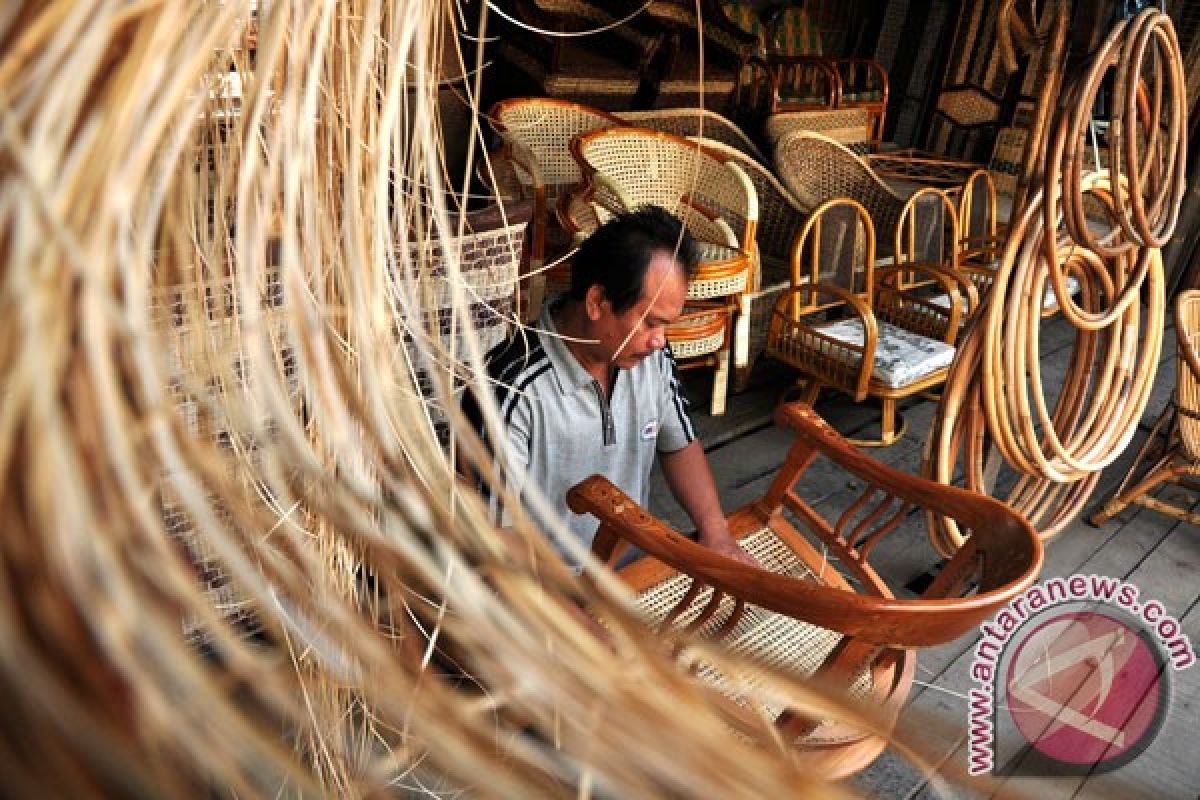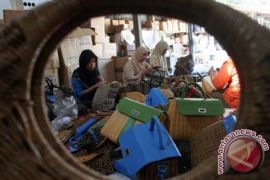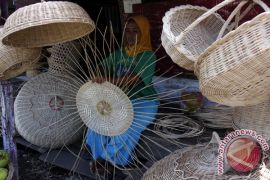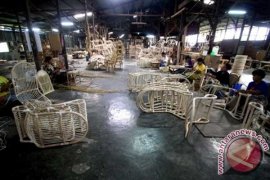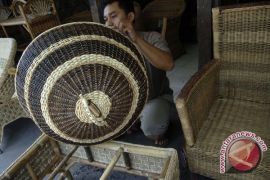The order of rattan furniture to be exported to Japan and Italy is increasing..."Jakarta (ANTARA News) - Indonesia`s exports of rattan furniture and crafts experience a significant increase in 2013 as the result of exhibitions in various countries.
Rattan furniture and handicraft articles still dominated Cirebon`s export commodities, although many of the raw materials of the products had been replaced with wood and plastic.
Head of Indonesian Rattan furniture and Handicraft Producers Association (AMKRI) Sunoto said in Cirebon district, West Java, that the export of rattan furniture and handicrafts from the district was pretty exciting in 2013.
According to him, the great demand of rattan furniture and handicrafts by the European market increased its export value by 82 percent this year.
"Exports of rattan furniture surged 82 percent to 1,200 containers so far this year from only 700 containers in the same period last year," Sunoto said.
He expressed hope that exports to new markets would contribute significantly to the increase in the 2014 exports.
AMKRI`s new market targets include Latin American countries, India, China and African countries.
Europe, Japan and the United States have been the traditional markets for the country`s rattan furniture products.
Therefore Sunoto said he would continue to boost the sales of rattan furniture by holding various exhibitions at home and abroad.
"Exhibitions in China and various American and African countries are able to boost rattan-made furniture, and to bring to life the ever slumped business," he went on.
Sunoto said that the rise of rattan furniture business should continue to be maintained because it is able to absorb millions of workers.
According to him, every country wanted different design and color, but for the purpose of exports to Japan, the demand for rattan furniture with natural color was very high.
Sunoto explained that the demand for rattan furniture with natural color from Japan`s market was very encouraging, and therefore he asked the rattan craftsmen to continue to maintain the design and motive.
He said the demand for rattan furniture for export market was high enough, thus its intensive exhibition overseas was expected to increase its export by 3,000 containers to various European and American countries until Africa in 2014.
Meanwhile, AMKRI secretary general Abdul Sobar said the exhibitions have succeeded in increasing demand for rattan furniture and reviving the country`s rattan business.
He said the country`s exports of rattan furniture are expected to increase more strongly in 2014.
AMKRI`s new market targets include Latin American countries, India, China and African countries.
Europe, Japan and the United States have been the traditional markets for the country`s rattan furniture products.
Abdul Sobar said AMKRI has also held exhibitions in Italy, the Netherlands, and Germany which have succeeded in increasing demand for rattan furniture and reviving the country`s rattan business.
Deputy Industry Minister Alex Retraubun said here recently that the National Rattan Innovation Center of the Ministry of Industry and Germany`s Innovationszentrun Lichtenfels have agreed to cooperate to develop rattan industry.
"This is part of efforts to create new rattan product designs to make rattan industry to boom again," Retraubun has said.
He said the cooperation was also expected to be able to boost development of downstream industries and transfer of knowledge in the field of innovation to make local products more competitive in the global market.
The director general of industrial zones` development, Dedi Mulyadi, meanwhile said the agreement would be used as the basis for wider cooperation in the development of the two countries` industries especially in rattan product innovation development.
Dedi said various kinds of cooperation to be carried out included technology development, design and marketing development, education and training, research cooperation, workshops, international seminars, business mediation, research and development and institutional cooperation.
"The government`s policy to stop raw rattan exports since early in 2012 to boost downstream rattan industrial development has given a positive impact to rattan industry development in Indonesia," he said.
The government had taken the measure because it wants rattan-based industries not to develop only in Java island but throughout Indonesia, the minister said.
Other fundamental reason of the rattan raw material export ban policy is to maintain the threshold of sustainable rattan and forest resources, improve industrial utilization and export of rattan products, as well as to prevent the smuggling of certain types of rattan.
Meanwhile, Arif Fadila, a rattan businessman and the owner of CV Armas Jaya Rattan in Cirebon, said the rattan and wooden furniture businesses had begun to excite and meet both local and export market demands.
"The order of rattan furniture to be exported to Japan and Italy is increasing after the government issued a ban on exports of rattan furniture raw materials," Fadila said.
He noted that the government`s policy banning exports of raw rattan has revived rattan processing industry especially with the growing demand from foreign buyers including from Asia and European countries.
The forest and plantation products director at Industry Ministry,
Aryan Warga, said in October last year that Indonesia was targeting to improve rattan products up to 230 million U.S. dollars in 2013 with largest markets projected in Europe and the United States in line with much-expected recovery in global economies.
He said that as of second half of 2012 the exports of rattan furniture and handicraft to Europe and the United States ranked at number six under the exports to China and Vietnam.
(T.O001/F001)
Reporter: Otniel Tamindael
Editor: Priyambodo RH
Copyright © ANTARA 2013
